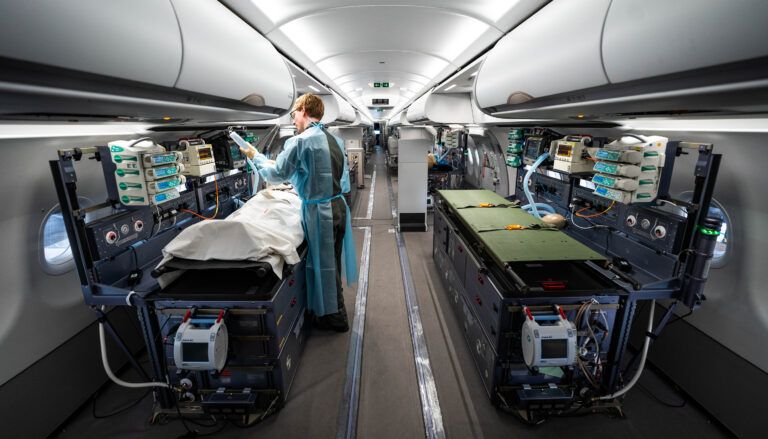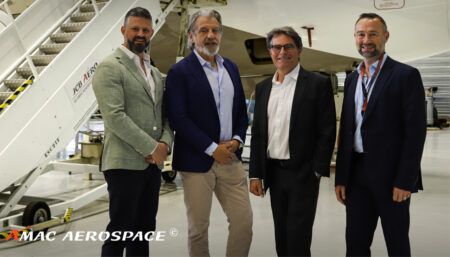OEMs and completion centres are responding to demand for more comprehensively equipped medevac interiors, meeting associated challenges around space, power, connectivity and hygiene, finds Marisa Garcia
Medical evacuation (medevac) operations today require more advanced systems and, as a result, operators are increasingly replacing or updating their aircraft – across the gamut from small jets up to Airbus and Boeing widebody airframes. Whether the aircraft is purpose-fitted for medevac at the factory or converted for this mission, experts say that the demand for medical interiors is rising.
“The market has continued to grow,” says Bob Gibbs, VP of global sales and strategy for special missions at Textron Aviation, adding that a lot of the demand comes from replacing an ageing fleet. “Globally, a lot of people are flying aircraft that are 30 and 40 years old, and those aircraft have gotten very expensive to operate. They’re less reliable, and they don’t have all the necessary equipment.”
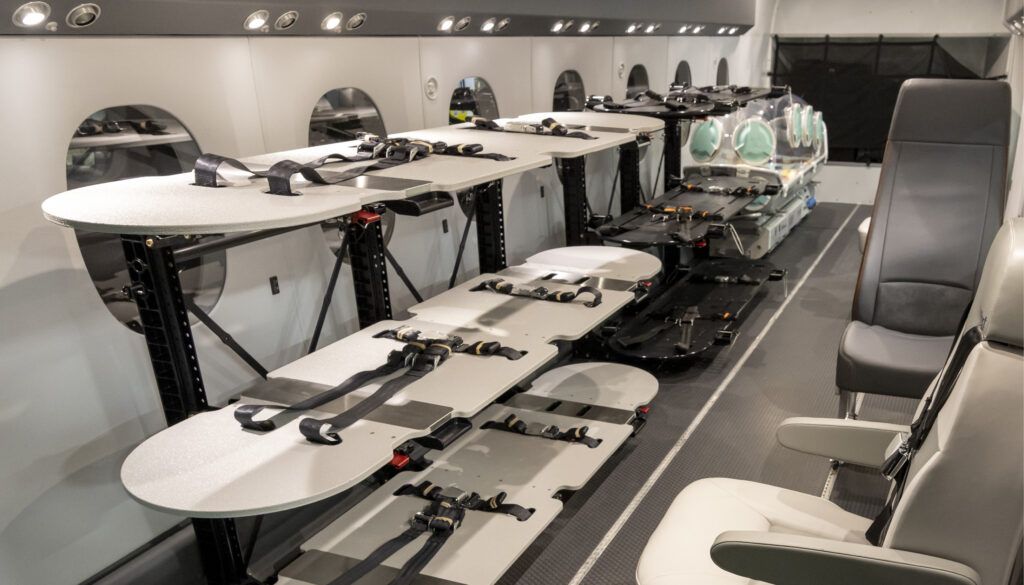
Jan Sebastian Kuehlsen, senior manager of technical sales and product management for aeromedical solutions at Lufthansa Technik, points to several factors driving the trend. “Firstly, the increasing volume of international travel naturally creates a greater need for medical transport solutions,” he explains. “Secondly, global crises, including the COVID pandemic, have highlighted the importance of rapid and secure medical evacuation capabilities, further driving demand in the VVIP and business jet segment.”
Lufthansa Technik expects increasing demand in the coming years. “The ongoing globalisation of business and the potential for future health emergencies suggest that the need for specialised medical aircraft will remain strong,” Kuehlsen says.
Alexis Lang, senior manager of completion and group sales at AMAC Aerospace, also sees growing demand: “The COVID-19 pandemic highlighted the need for adaptable, high-performance medical evacuation solutions, and we foresee sustained growth in this sector. Our clients seek aircraft that not only meet immediate critical care needs, but also offer flexible configurations.”
“We design and deliver VIP medevac interiors integrating advanced life-support systems, intensive care units and isolation compartments,” Lang adds.
Tailored interiors
Cyril Martiniere, Jet Aviation’s VP of maintenance services, Europe, and general manager of the facility in Basel, Switzerland, says the requirements are often mission-specific. “We work closely with medical teams to design, engineer and craft tailored medical interiors, whether for first-aid stations, inflight hospital rooms or full medevac capabilities,” he explains.
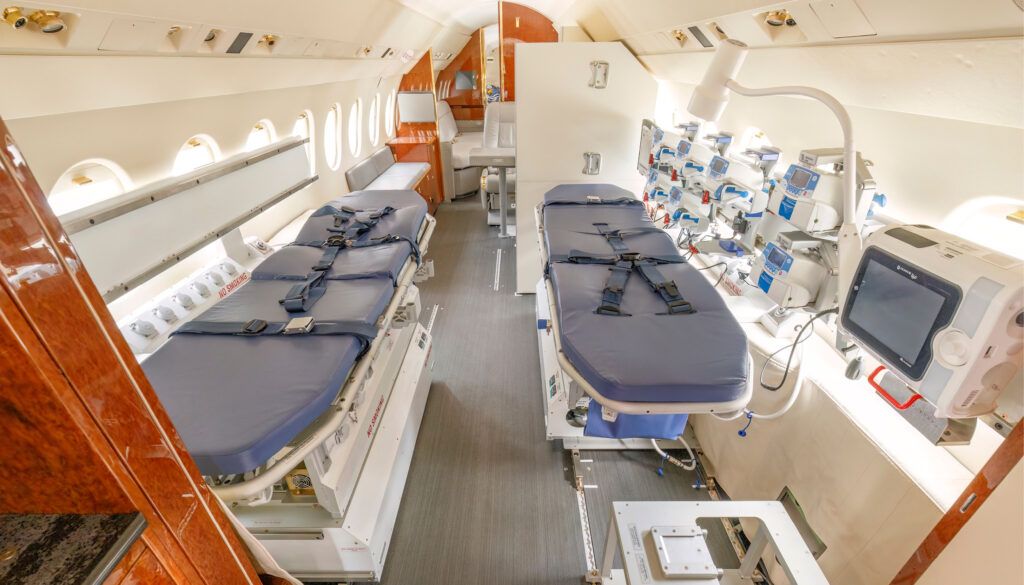
Medical transport needs have evolved from basic patient transport setups to fully equipped intensive care units. “The amount of equipment carried has gone up,” says Gibbs of Textron Aviation. “There’s more sophisticated equipment now.”
Equipment list
A comprehensive selection of devices are used to support patient care. “Core medical equipment includes patient monitors, defibrillators, ventilators, syringe and infusion pumps, and medical suction units,” explains Kuehlsen of Lufthansa Technik. “Some setups also include chest compression units and handheld blood analysers.”
Interiors have evolved to meet changing medical demands and technological advancements. “Beyond our Patient Transport Unit (PTU), we now offer high-comfort patient beds, medical device retainers, protective floor covers, and custom solutions tailored to specific medical requirements,” says Kuehlsen.
“Our designs now prioritise seamless integration with aircraft infrastructure and the latest medical devices,” he adds. “We’ve moved away from compressed air and suction units, instead focusing on increased oxygen capacity and greater payload for medical consumables.”

Doors and ergonomics
To accommodate more medical equipment on board, space must be optimised. “What we found globally is the attention to the ergonomics of the medical staff and the size of the patient-driven needs, including larger cabins and bigger doors,” says Gibbs.
To ensure adequate power supply for medical equipment, Textron Aviation installs larger starter generators on an aircraft. “Or as a minimum, we add a separate electrical bus so that we can carry all the equipment needed,” Gibbs says.
Others also highlighted the importance of a reliable power supply. “Ensuring fail-safe and redundant power for critical medical equipment is a paramount concern,” says Kuehlsen. “Our PTU is equipped with a dedicated electrical system that converts the aircraft’s power input to meet the specific requirements of the medical devices.”
This system also incorporates an integrated alarm system designed to provide immediate alerts in the event of oxygen or electrical power failures.
“Transporting intensive care patients necessitates a substantial medical oxygen capacity,” explains Kuehlsen. “Lufthansa Technik can realise medical oxygen supply durations of 15 hours and beyond. However, handling large amounts of oxygen within an aircraft presents unique technical challenges, demanding strict adherence to a range of critical safety requirements.”
Other considerations include cooling. “When you start adding a lot of electrical equipment, you can add a lot of heat in the cabin, so you’ve got to have an air conditioning system that takes care of that,” says Gibbs.
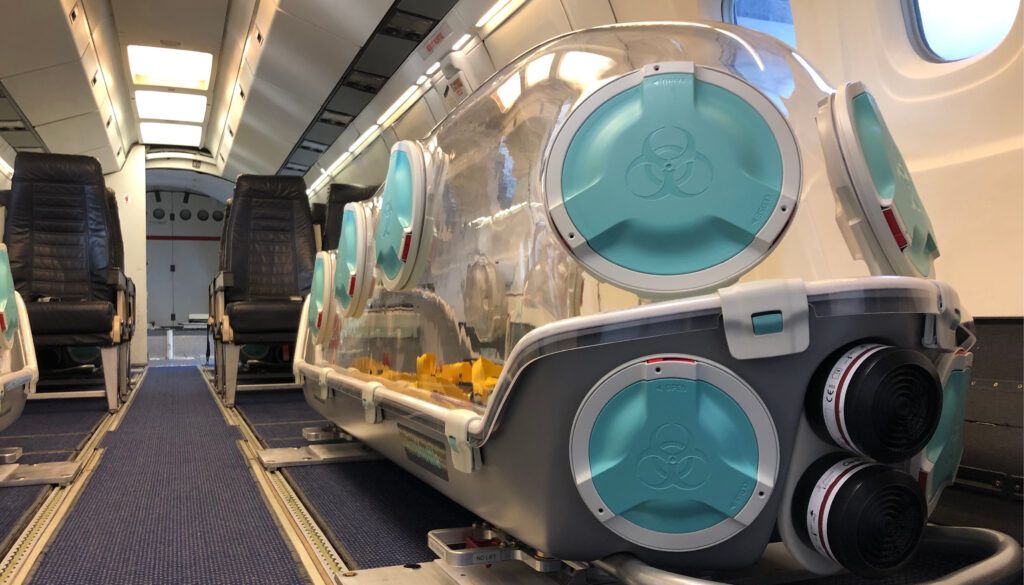
Patient data
Several experts highlight the need for connectivity, so patient monitoring data can be transmitted to the hospital while the passenger is in the air. “Satellite communication is now basic table stakes for the aircraft, and that includes the data, not just sat phone, but voice and data,” says Gibbs. “A lot of telemetry systems now allow an EKG to be connected to the patient and transmitted to the hospital at the same time.”
The materials used for medevac cabins are chosen to ensure durability and meet stringent medical cleaning protocols.
“Cleaning and disinfection are paramount,” notes Kuehlsen. “The wide range of cleaning and disinfectant ingredients presents a significant material compatibility challenge, which we address by ensuring our products are compatible with state-of-the-art cleaning and disinfection agents. This focus extends beyond the patient bed and medical equipment. We also offer easily cleanable and disinfectable solutions for protecting the aircraft floor. This is especially crucial for cabins not permanently configured for medical use.”
Vincent Tessier, head of ACJ marketing at Airbus, says material requirements vary by application. “There are no specific materials required on the aircraft by regulations, but functional materials and surface coatings can be adapted in compliance with such a medical environment to make the cleanliness and sanitising easier,” he says.
“We use antimicrobial, non-porous materials that meet medical sanitation requirements while aligning with clients’ aesthetic preferences,” adds Lang of AMAC.
Swift conversion
For dual-use aircraft, Martiniere of Jet Aviation highlights the importance of rapid conversion. “Aircraft interiors have evolved, allowing seamless integration of medical equipment into VIP configurations,” he says. “We recently redelivered a modification enabling conversion from VIP cabin to double medical bay in just over 1.5 hours.
“When the cabin is used for both VIP and medical missions, we ensure that removable elements like carpets and delicate finishes are adequately protected.”
This feature was written by Marisa Garcia and first published in the March/April 2025 edition of Business Jet Interiors International. Click here for the full article.


